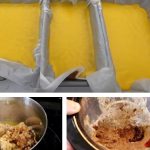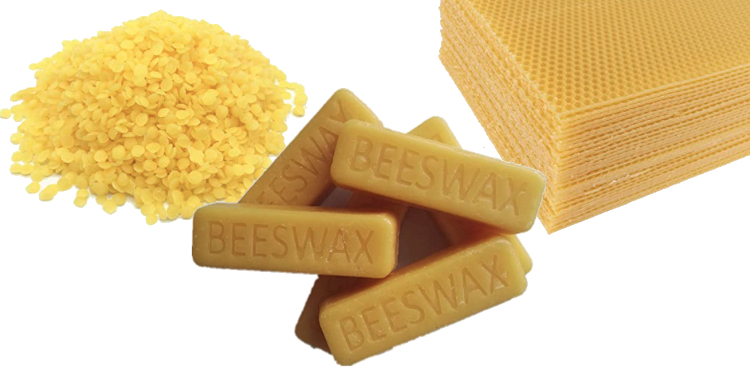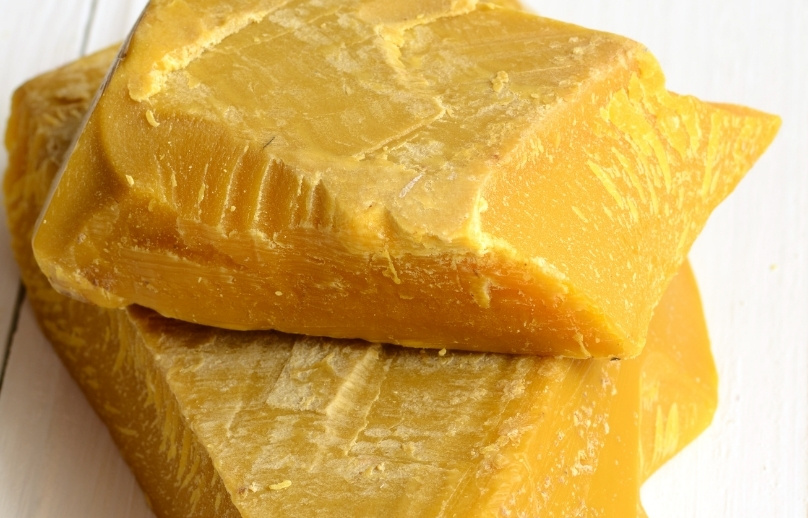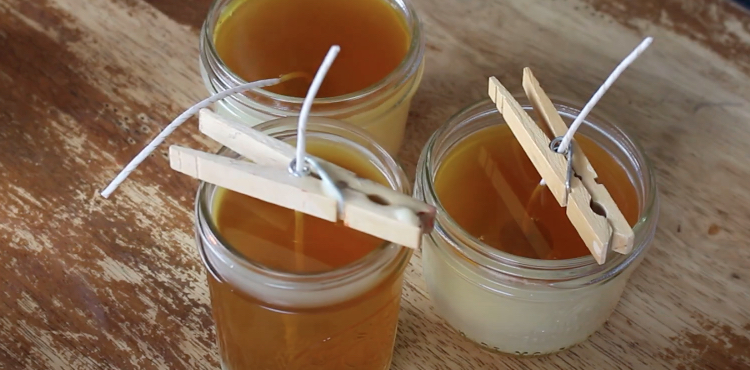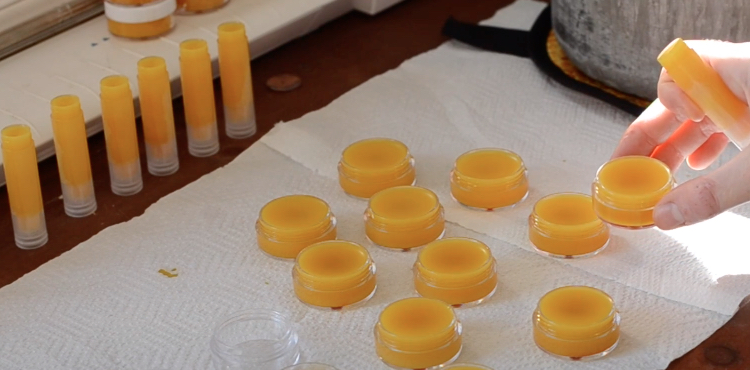Did you know that up to 40% of “pure” beeswax products on the market may actually be adulterated with paraffin or other synthetic waxes? As an experienced beekeeper and natural product formulator, I’ve learned that identifying genuine beeswax isn’t always straightforward – but it’s crucial for everything from candle-making to cosmetics.
Whether you’re a DIY enthusiast or a conscious consumer, these tried-and-tested methods will help you spot the real deal. Let me share the testing methods I’ve mastered to ensure you’re getting the real deal every time.

Why Identifying Pure Beeswax is Important
Pure beeswax has become increasingly hard to find, and for good reason. With prices ranging from $15-25 per pound, it’s tempting for suppliers to cut corners with cheaper alternatives.
In my early days of soap making, I unknowingly used adulterated wax that completely ruined a batch of luxury facial balms – a $200 mistake I’ll never forget!
Pure beeswax is essential for:
- Cosmetic products (it’s hypoallergenic and naturally nourishing)
- Natural candles (clean-burning with beneficial negative ions)
- Food-safe applications (coating cheese, wraps)
- Traditional woodworking and metalworking
Physical Characteristics of Pure Beeswax
Real beeswax has a distinctive appearance that’s hard to fake once you know what to look for. Mine typically comes in blocks that show a natural, matte surface with a slight golden to amber color. The opacity should be slightly translucent but not crystal clear.
Key identifiers I’ve learned to spot:
- Natural matte finish (never super glossy)
- Slight tackiness at room temperature
- Firm but not rock-hard consistency
- Opaque to semi-translucent appearance
Melting Point Test
Here’s a test I perform on every new batch: Pure beeswax has a specific melting point between 144°F and 147°F (62-64°C). I use a candy thermometer to check this precisely. If your wax melts significantly below this range, it’s likely been cut with paraffin or other additives.
Testing steps:
- Grate a small amount of wax
- Use a double boiler setup
- Monitor temperature with an accurate thermometer
- Note when melting begins and completes

Smell Test
The aroma test is probably my favorite because it’s so immediate. Pure beeswax has a subtle, honey-like scent that’s impossible to replicate artificially. I’ve found the smell becomes more pronounced when you warm the wax slightly between your hands.
What to notice:
- Mild honey fragrance
- Natural, sweet undertones
- No artificial or chemical scents
- Fragrance intensifies with gentle warming
Visual Inspection and Color
Natural beeswax comes in various shades, from pale ivory to deep amber. In my collection, I’ve seen at least five different natural color variations. The key is looking for consistency within each block – artificial colorants often show uneven distribution.
Color indicators:
- Even coloring throughout
- Natural variations between batches
- No unnaturally bright yellow hues
- Subtle color gradients possible
Texture and Consistency Analysis
The texture test has saved me from many questionable purchases. When scraped with your fingernail, pure beeswax should produce small, powdery curls. I’ve noticed that adulterated wax tends to create longer, ribbon-like shavings instead.
Texture characteristics:
- Slightly brittle at room temperature
- Creates powdery scrapes
- Breaks with a clean snap
- Non-greasy feel
Flame Behavior Test
The burn test requires caution but provides valuable information. Pure beeswax burns with a bright, clean flame and produces a subtle honey scent. I always perform this test in a well-ventilated area and keep a fire extinguisher handy.
What to observe:
- Bright, steady flame
- Light honey aroma when burning
- Minimal smoke (should be white/light gray)
- No black soot production
Water Solubility Test
Pure beeswax is completely insoluble in water at room temperature. Here’s my simple test: Drop a small piece in water – it should float and remain unchanged. If it starts to dissolve or sink, you’re dealing with adulterated wax.
Testing method:
- Fill a glass with room temperature water
- Add a small piece of beeswax
- Observe for 30 minutes
- Check for any changes in the wax
Acetone Test
While I don’t love using chemicals, the acetone test is quite reliable. Pure beeswax won’t dissolve in acetone, while many additives will. I place a small amount of grated wax in acetone and watch for any dissolution.
Safety precautions:
- Use in well-ventilated area
- Wear protective gloves
- Keep away from heat sources
- Use glass containers only
The Break Test: Examining Beeswax Structure
The break test has become my go-to method for quick authentication. I discovered its reliability after a local beekeeper taught me this technique, and it’s saved me countless times from purchasing adulterated wax.
How To Properly Perform The Break Test
Here’s my step-by-step process:
- Cool the wax to room temperature (around 70°F/21°C)
- Hold a piece of wax about 3-4 inches long
- Apply steady pressure until it breaks
- Examine the breaking surface immediately
Pro tip: I always test multiple spots on larger blocks, as some adulterants might not be evenly distributed.
What Clean Breaks Indicate About Purity
Pure beeswax exhibits what we call a “conchoidal fracture” – similar to how glass breaks. When I’m testing, I look for:
- A clean, sharp break edge
- Slightly grainy or pebbly texture
- Small, shell-like patterns on the broken surface
- Matte appearance at the break point
Signs Of Adulteration In Break Patterns
Through my testing experiences, I’ve identified several red flags:
- Smooth, waxy surfaces at the break point
- Stretching or bending before breaking
- Layered or flaky break patterns
- Extremely glossy break surfaces
Comparing Break Patterns Between Pure And Mixed Waxes
I’ve created a mental library of break patterns over the years. Here’s what different mixtures typically show:
- Pure beeswax: Sharp, clean break with granular texture
- Paraffin mixture: Smooth, waxy break with some bending
- Stearic acid blend: Flaky, layered break pattern
- Microcrystalline mix: Dense, smooth break with resistance
Common Adulterants And How To Spot Them
After encountering numerous adulterated samples, I’ve learned to identify the most common additives. Let me share what to watch for with each type.
Identifying Paraffin Wax Additives
Paraffin is the most common adulterant I’ve encountered. Here’s how I spot it:
- Lower melting point (typically below 140°F/60°C)
- Greasy rather than tacky feel
- Softer texture at room temperature
- Tends to bend before breaking
- Produces black smoke when burned
Detecting Stearic Acid Presence
This one took me a while to master, but now I can spot stearic acid additions fairly easily:
- More opaque appearance
- Distinctly layered structure
- Flaky texture when broken
- Higher melting point than pure beeswax
- Produces a waxy, artificial smell when melted
Spotting Tallow Or Animal Fat Mixtures
One of the trickier adulterants to identify, but here’s what I look for:
- Distinct greasy feel
- Softer consistency
- Unpleasant odor when heated
- Tends to go rancid over time
- Makes the wax more pliable
Understanding Microcrystalline Wax Additions
This sophisticated adulterant requires careful testing:
- Higher melting point than pure beeswax
- More flexible than pure beeswax
- Extremely smooth texture
- Lacks natural beeswax aroma
- Often has a synthetic sheen
Recognizing Synthetic Wax Blends
Modern synthetic waxes can be quite sophisticated, but they still show telling signs:
- Unnaturally consistent color
- Perfect opacity throughout
- No natural aromatics
- Uniform melting behavior
- Plastic-like break pattern
Trusted Sources for Authentic Beeswax
After some disappointing purchases, I’ve learned to source my beeswax carefully. For a detailed breakdown of where and how to purchase quality beeswax, including pricing guides and supplier recommendations, see my complete guide on where to buy pure beeswax.
In my experience local beekeepers have become my go-to suppliers – nothing beats being able to see their operation firsthand. When buying online, I look for established suppliers who specialize in beekeeping products.
Reliable sources include:
- Local beekeepers with their own operations
- Certified organic suppliers
- Established beekeeping supply companies
- Artisanal chandlers who source directly
Armed with these authentication techniques, you’re now well-equipped to identify pure beeswax with confidence! Remember that while no single test is definitive, combining multiple methods will give you the most accurate assessment.
Whether you’re crafting natural skincare products or making candles, even small amounts of adulterants can significantly impact the properties of beeswax. Don’t hesitate to request documentation from suppliers and trust your senses – they’re often your best tools for detecting authenticity!
I find it helpful to keep samples of confirmed pure beeswax for comparison when testing new purchases. Sometimes, the differences are subtle, but with practice, they become more obvious. I’ve learned that no single test is definitive – it’s the combination of multiple testing methods that gives you the most reliable results.


